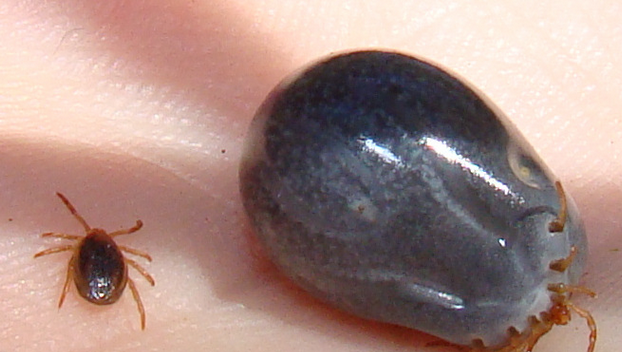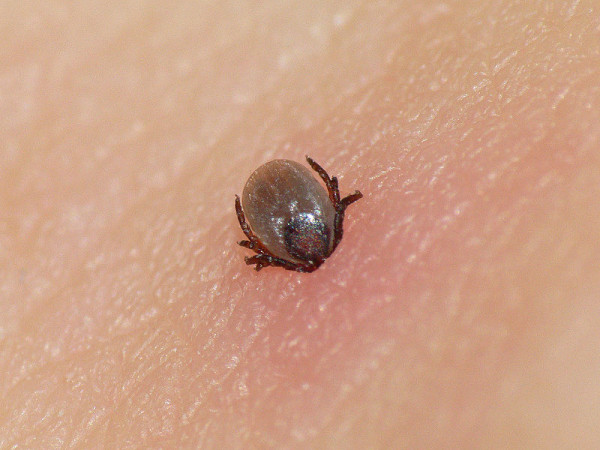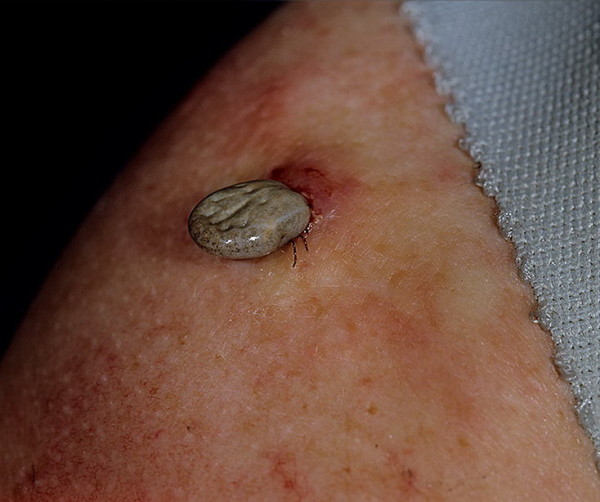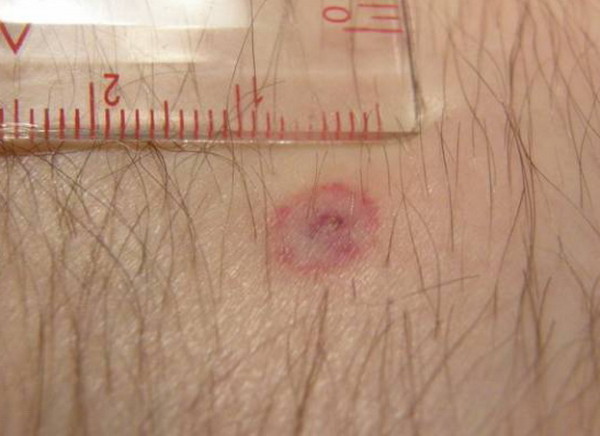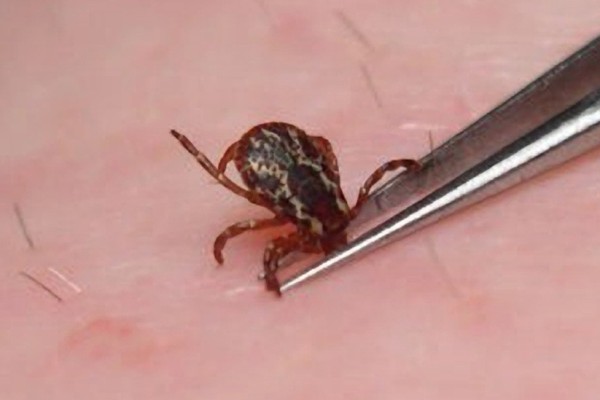Tick bite: symptoms, signs, treatment
With the arrival of spring, not only leaves and flowers bloom, but also various insects and mites wake up and activate. Ticks are arthropods, and the bite of infected individuals can cause various diseases. Fortunately, no more than 20% of ticks are infected. But still, everyone should know where these pests are found, how to scare them away and what to do if the pest has bitten.
Content
Where do ticks live?
The largest number of bites by these pests is recorded in the central, Ural, Siberian regions, the smallest in the south and North Caucasus. They wake up at an average daily temperature above 0-3 ̊С and live until late autumn.
The habitat of the forest mite is wet and dark wooded places. Ticks live in dry grass or shrubs in damp and dark wooded areas. They do not know how to jump or fly, but they cling very tightly to clothes, and then crawl to open areas of the skin. Ticks feel their approaching victim tens of meters away, so special protective equipment with a strong odor helps in the fight against bites by interrupting the smell of a person.
How a tick bites
Most often, pests choose a place for a bite in the armpits, neck, head, lower legs, abdomen, groin area, other folded areas. They may not bite right away, but first crawl on the skin for several hours. When bitten, a tick pierces the skin and attaches to it with a specific organ called a hypostome. The organ is a kind of outgrowth that performs the functions of sucking blood and attaching to the human body.
During the suction of blood, the volume of the pest increases many times. In this case, males are saturated in 1-1.5 hours. Individuals of the female sex can be in this state for up to 10 days, they are distinguished by their gluttony.
Signs of a tick bite
A person practically cannot feel that he has been bitten by a tick. The pest has a very small size, in addition, during the suction process, it injects its saliva, which plays the role of an anesthetic and makes the bite invisible. After puncturing the skin, it sticks to the capillaries and draws blood. As a result, his body increases in size, and it is no longer difficult to see him.
The bite site will also have characteristic signs corresponding to the type and state of health of the tick, the duration of its attachment. If a sterile, not a carrier of diseases, an individual has bitten, then at the place of suction there will be a small red spot with a bite mark inside.
As a result of an allergy to substances contained in the pest's saliva, edema may occur on the body near the bite. With a strong reaction of the body, the area of redness can be more than 100 mm in diameter, there is a strong swelling.
Additional signs are:
- the appearance of causeless drowsiness, fatigue;
- aches and pain in joints, accompanied by chills;
- the appearance of photophobia.
As a rule, a stronger reaction occurs in weak and sick people, children, the elderly with chronic diseases. It is for them that it is very important to find the place of the tick bite as quickly as possible and take preventive measures.
Tick bite - symptoms
Symptoms of a bite sometimes do not appear immediately, it depends on the state of the victim's immune system. A slight increase in body temperature, pressure may indicate other diseases. But in combination with the appearance of itchy rashes, an increase in regional lymph nodes, an increased heart rate, these are clear symptoms of a tick bite.
If a person has poor health, then the reaction can be very strong, for example:
- there will be nausea or vomiting,
- wheezing will occur, it will be difficult to breathe,
- headaches will appear
- the occurrence of a state of nervous excitement is possible, up to the appearance of hallucinations.
It is very important to monitor the condition of the victim, not only immediately after the bite, but also for several days. If in the first hours an elevated temperature indicates an allergy to tick saliva, then in the following hours - the onset of an infectious disease.
For each infectious disease, there are characteristic drops in body temperature:
- Tick-borne encephalitis. When infected, the victim's temperature rises 2-4 days after infection. The feverish state lasts 2-3 days, then the temperature returns to normal. After a week, the cycle is repeated.
- Lyme Borreliosis is accompanied by a slight increase in the body temperature of the victim, necessarily in combination with other symptoms: chills, joint pain, headache.
- Monocytic ehrlichiosis causes an increase in temperature 8-14 days after infection, fever lasts for about 3 weeks.
- Granulocytic anaplasmosis causes fever by 14 days after infection.
The occurrence of at least one of the above symptoms is a reason to consult a doctor.
How to remove a tick
If a sucked tick is found, it is necessary to quickly remove it, while trying not to damage its belly. Otherwise, the risk of infection from it increases significantly. It is not easy to tear off the pest; when it sucks, it releases a special substance that sticks the proboscis to the skin.
- First of all, you need to shake the body of the tick a little, this will destroy the adhesive layer between it and the human skin.
- With the help of tweezers, a special device, a loop of thread, you need to grab the pest as close to the head as possible and gently pull. Hand movements should be perpendicular to the surface of the skin at the site of the bite.
 The most important thing is not to damage the belly of the pest. Otherwise, the sucked blood with possible pathogens will go directly into the wound. It is also not recommended to touch the tick with your hands; you need to use gloves and a handkerchief.
The most important thing is not to damage the belly of the pest. Otherwise, the sucked blood with possible pathogens will go directly into the wound. It is also not recommended to touch the tick with your hands; you need to use gloves and a handkerchief.
Prevention after a tick bite
After removing the pest, the wound is washed with soap, then treated with iodine or brilliant green. If the head remains in the skin, then it can be removed, acting in a similar way to the principle of removing splinters, using a sterile needle.
For several days, there will be redness around the wound, which will disappear in a week. This is a normal reaction of the body. But if the trail does not pass, but increases in size, then the likelihood of infection is high. And you need to be tested.
Tick bite - treatment
A live tick can be taken for analysis to exclude the likelihood of infection, but a more accurate result will be given by a blood test of the victim. If the test results confirm the presence of one of the dangerous diseases, then you must immediately contact a medical institution for the introduction of immunoglobulin and other medical procedures. The sooner the disease is detected, the more likely it is that the disease will develop mildly.
Timely vaccination, which is carried out, including children over 1 year old. When visiting forests it is recommended to wear light-colored, closed clothing and use special sprays, ointments for various types of pests.
